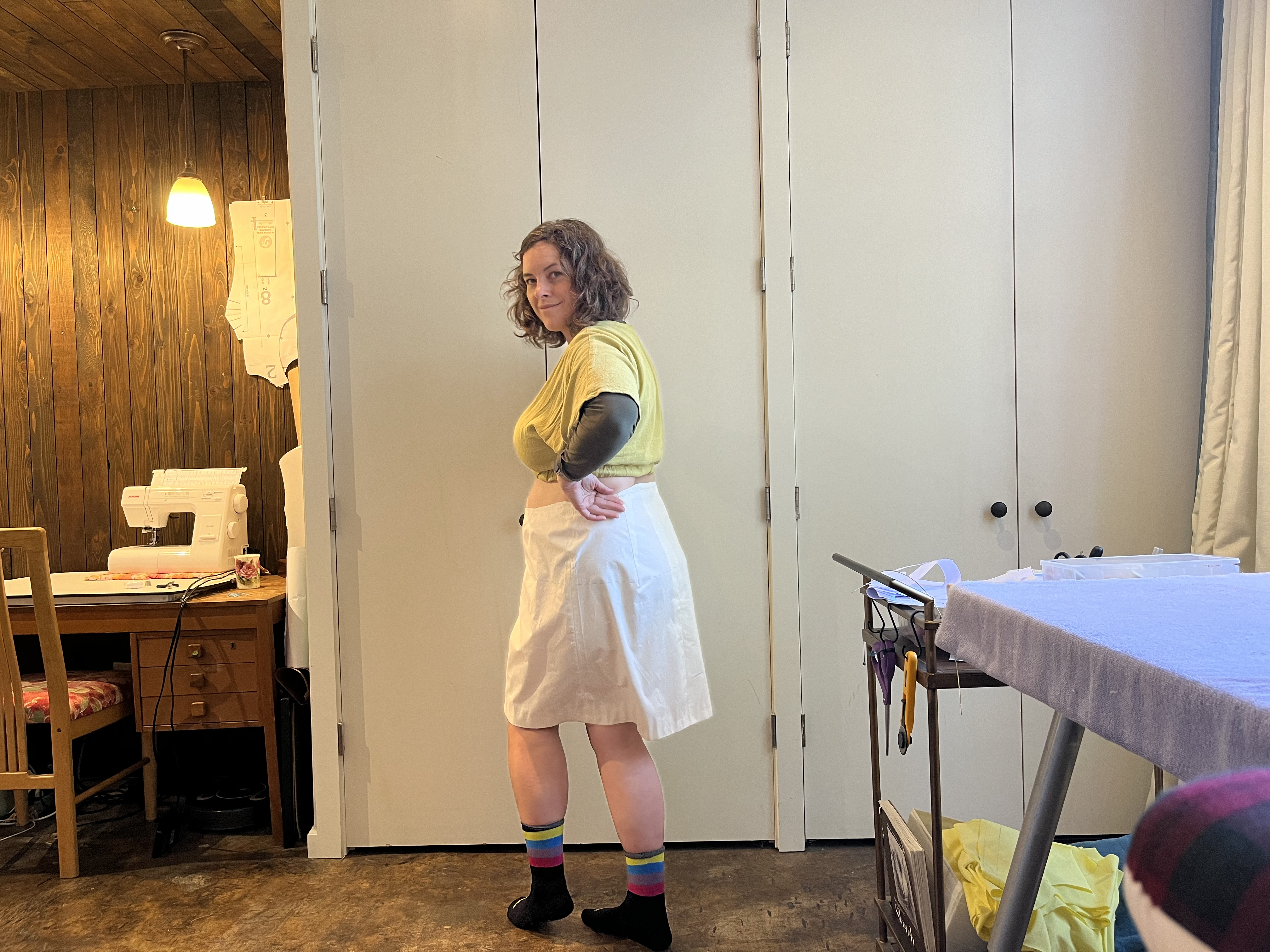Lessons in Process
Written on February 14th, 2024 by Pearl Ryder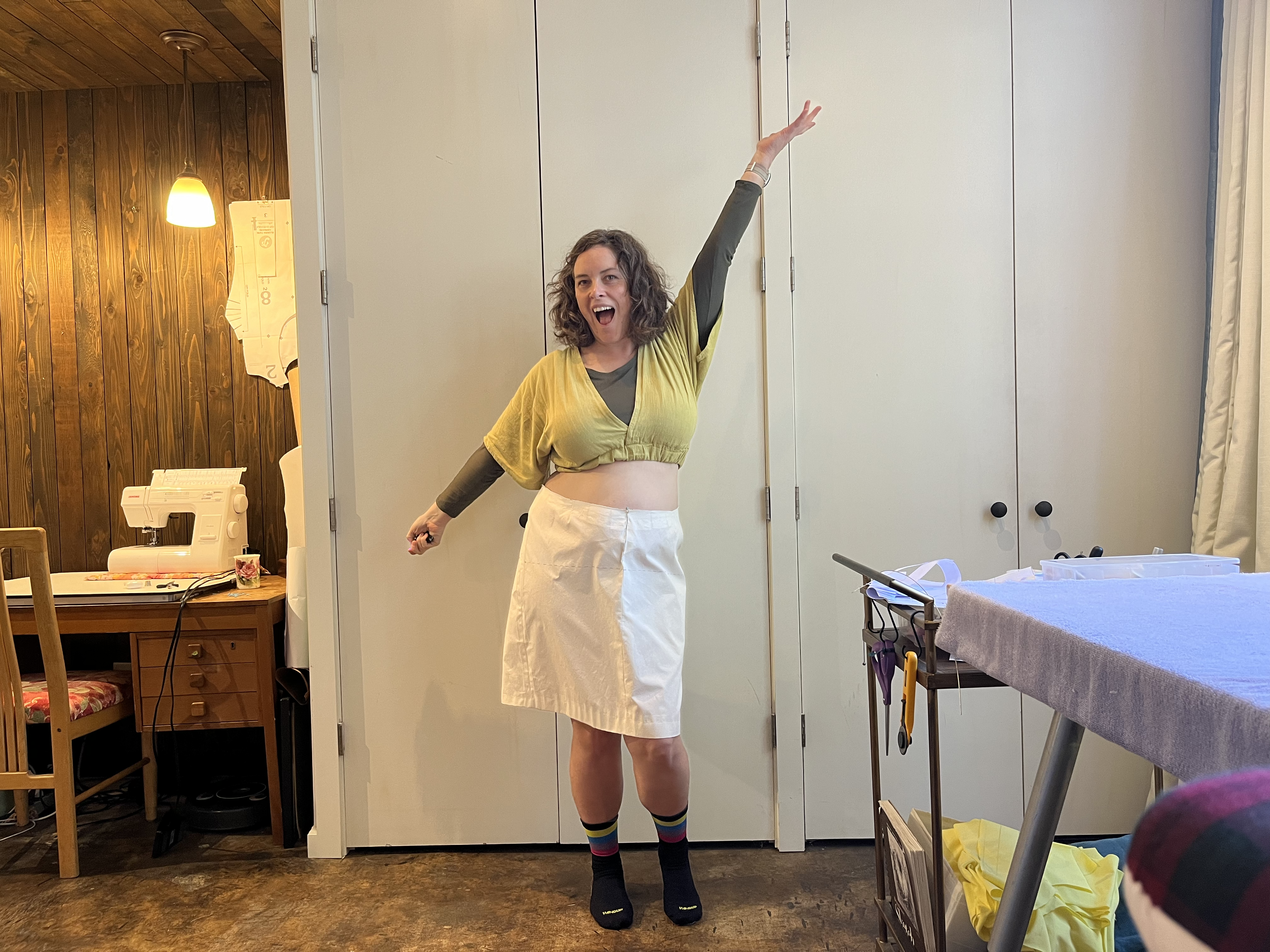
The last few weeks have been a study in patience and slowing down. At the end of January, I embarked on the custom skirt block mockup testing process. Ah, the joy of new handskills: cutting, threadmarking, pin basting, machine basting, hand basting. Brooks Ann Camper teaches new approaches for all of these skills and I have thoroughly enjoyed trying out her style.
I don’t (yet) have my own professional style-sewing table (oh, how I dream), but I did create a pinnable table top using some diaper boxes and craft paper:
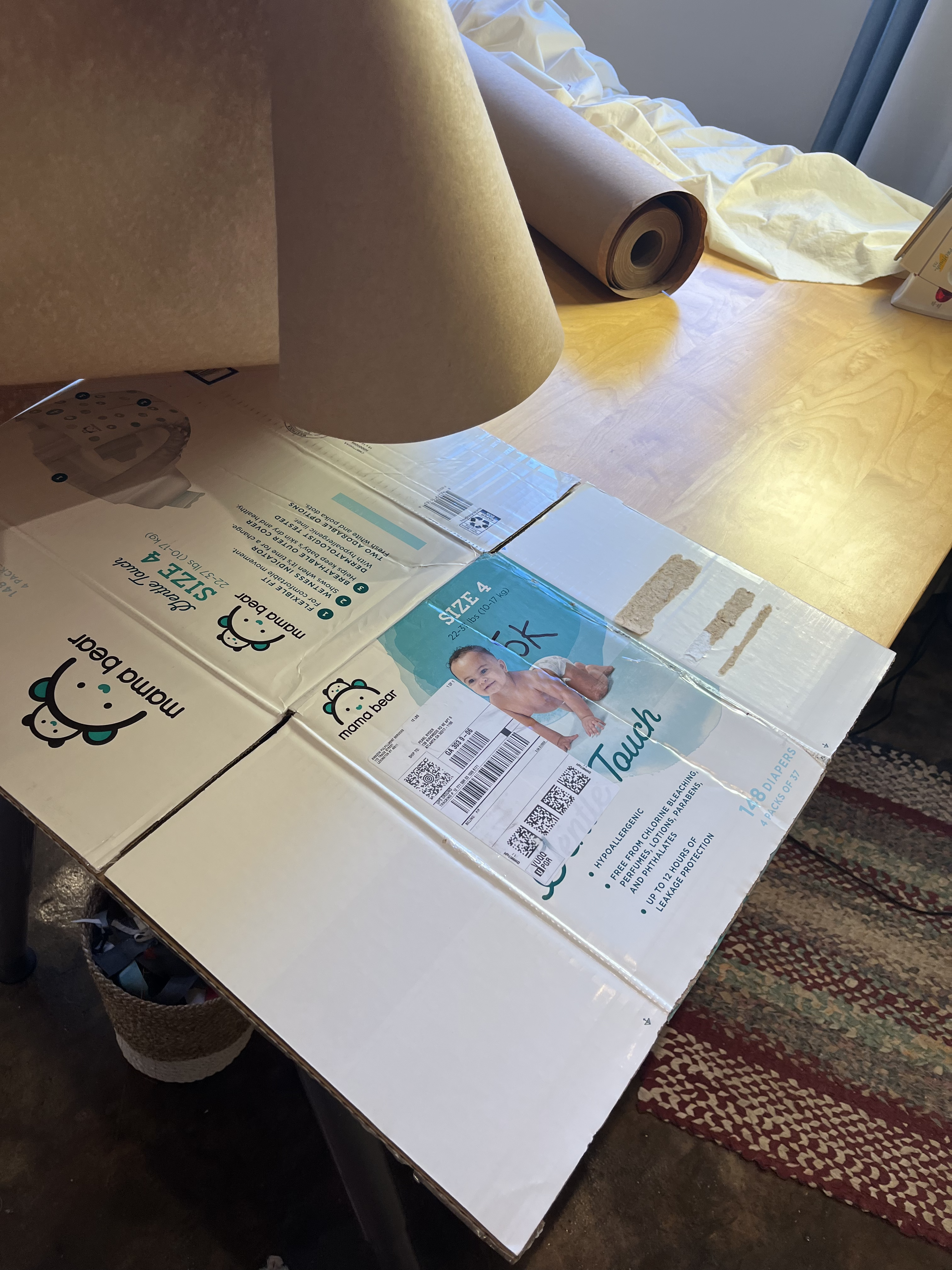
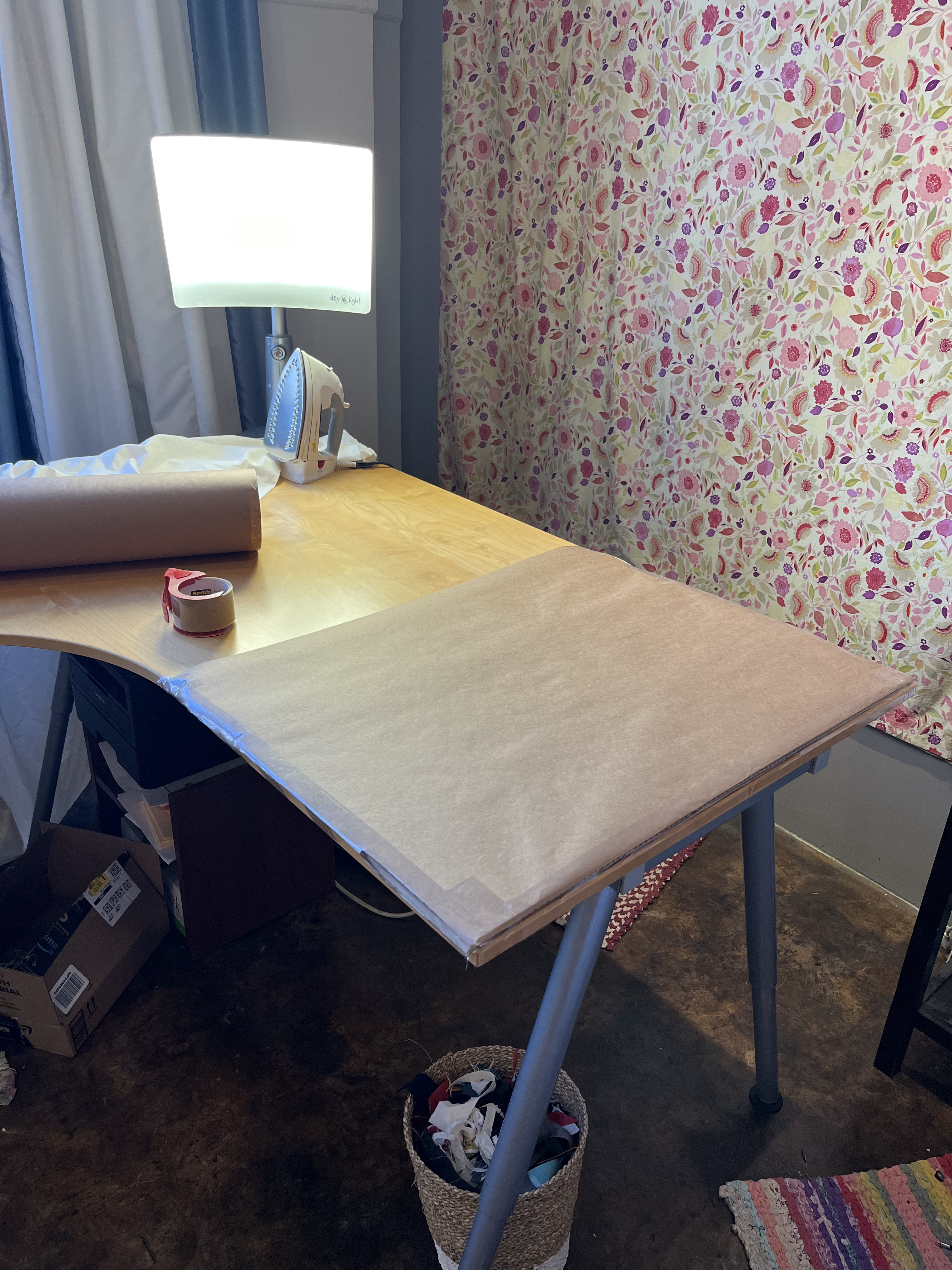
This table has proved very useful for cutting and making adjustments to my skirt block mockup. It turns out that I love to sew stitching lines directly rather than following seam allowances. You know exactly where you’re supposed to stitch. Cutting accuracy matters less and you can have more generous seam allowances (more flexibility when fitting). After stitching, it’s easy to inspect your work and decide if you want to re-stitch.
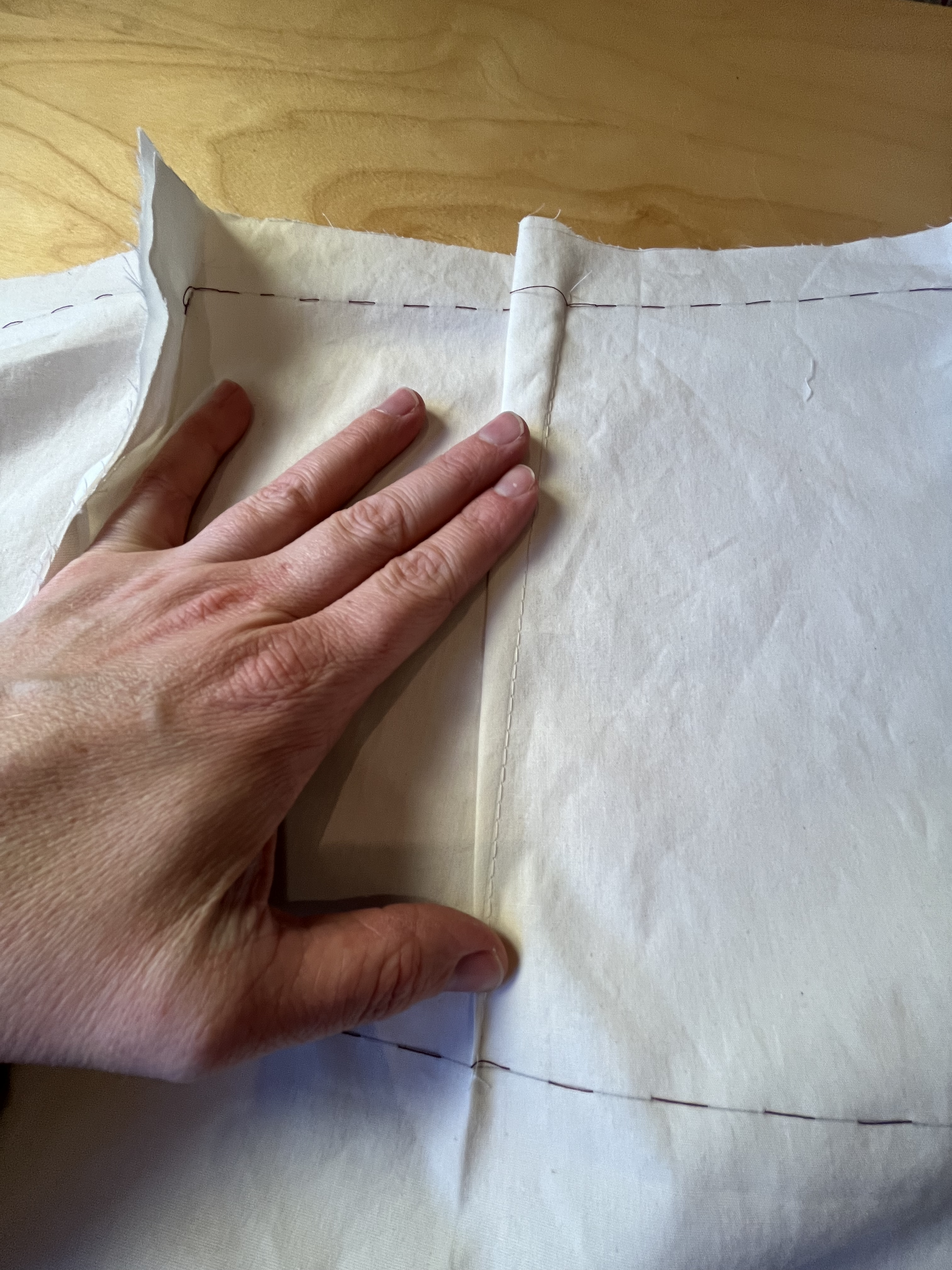
It took just over a week to fit and adjust my initial skirt block mockup. There’s really so much to say about learning to fit. It takes patience. And so I’ve been thinking about why fitting is so challenging and have learned a few things about making the process better for me. A collection of fitting thoughts:
- It’s a lot of body inspection and decision making.
- Decisions take energy because it is uncomfortable to sit in a place of uncertainty.
- Body inspection takes energy because I’m still working on embracing my body exactly as it is. The “you should take up less space and be smaller” messages that are embedded in our culture are hard to unlearn. But also, an emphatic NO to that idea.
- When I’m hurrying to get through the process, that usually indicates that I’m feeling uncomfortable from either the unknowns or the internal body criticism. Sitting with that feeling rather than rushing through it feels right at this time in my life.
- A framework and fitting order (provided in the Skirt Skills curriculum) help to prioritize which experiments to test.
- I found it very helpful to take photos and analyze those at the computer rather than trying to hold everything in my head in front of the mirror. It made it more clear what I knew, what I didn’t know, and what I wanted to try. Here’s an example of an in-process skirt block test:
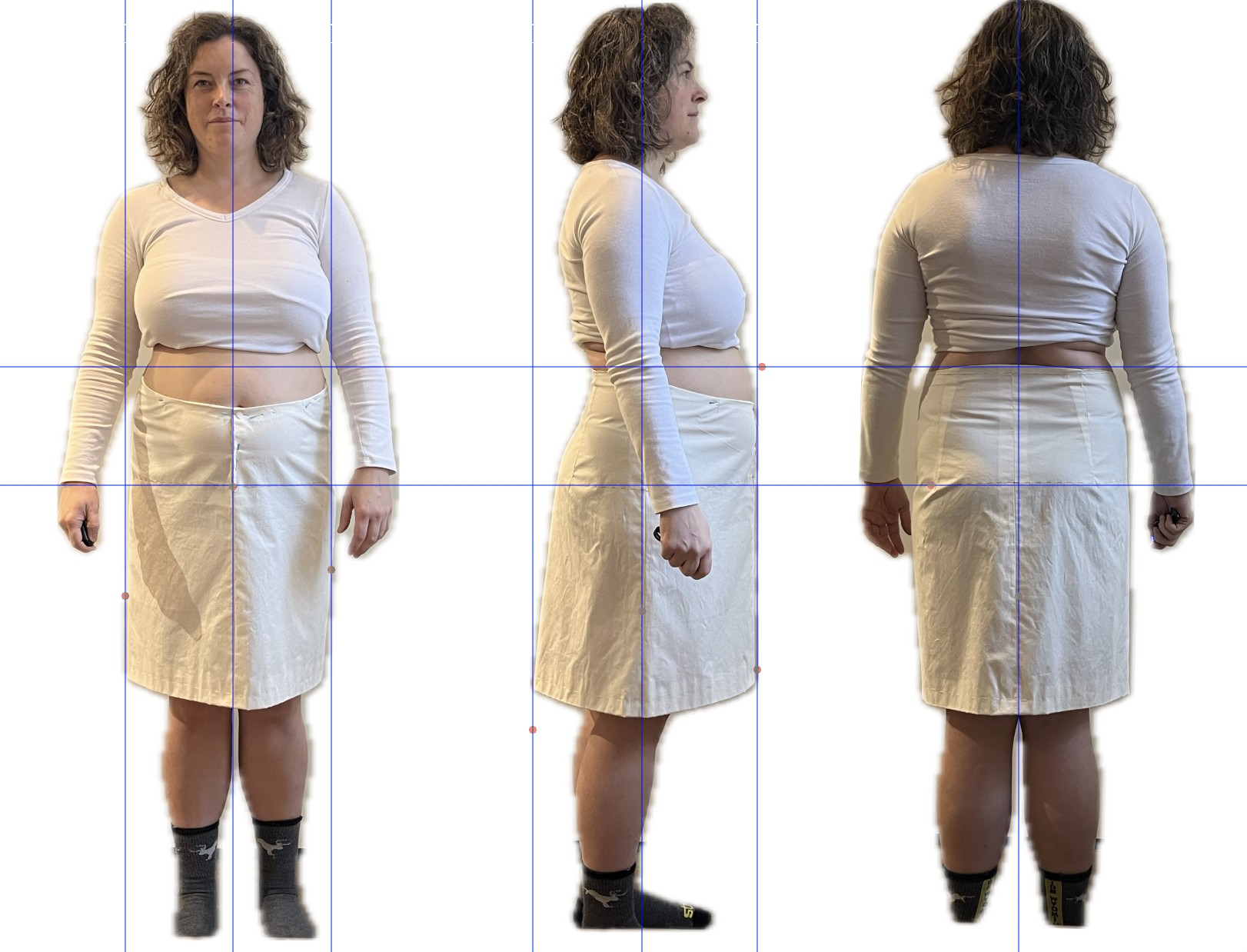
Ultimately, I reached a skirt block that I’m happy with and I’m moving forward into pattern making. I’ve got a midi A-line/gentle circle skirt in mind and a lovely cotton-linen blend in my fabric stash. Yay!
